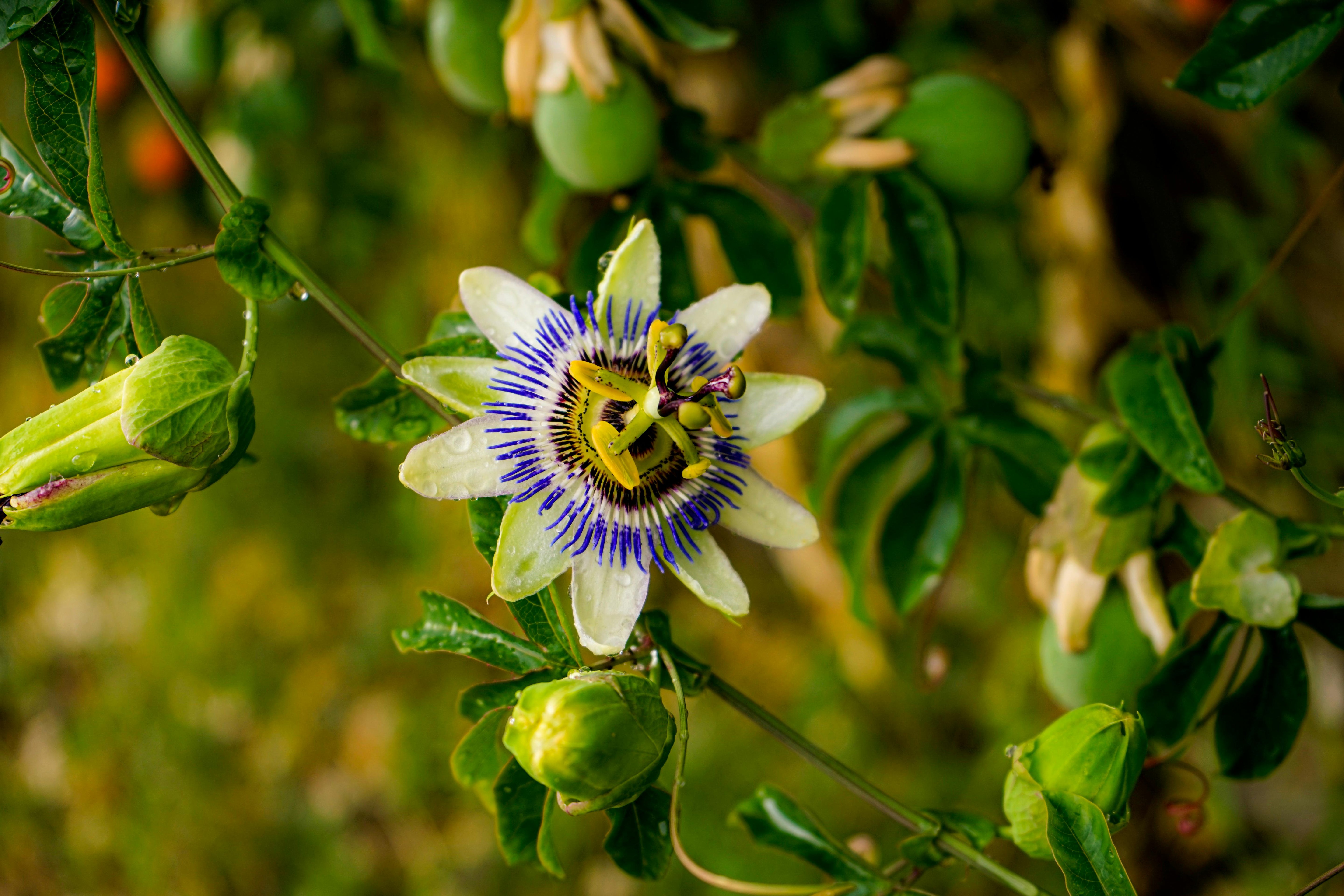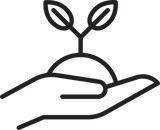The Importance of Postpartum rituals
Postpartum care is just as essential as pregnancy care, yet many women receive little to no support during this critical time. The healthcare system often emphasizes pregnancy and birth, but the fourth trimester — the healing and adjustment period after childbirth — is just as important. After speaking with some incredible mothers, this reality hit even harder. I often heard comments like, “I had no support,” “I was never told to take care of myself nor had a baseline for if what I was feeling was normal or not,” and “There’s this pressure to keep up with cooking, laundry, and household chores, all while caring for a newborn on half the sleep.”
In many cultures, postpartum rituals are seamlessly woven into the birthing journey, as they should be. In Mexico, for example, there’s a 30-day rest period called la cuarentena, where the mother is nurtured, fed, and relieved of responsibilities so she can heal. In countries like Sweden and the Netherlands, postpartum care often includes midwife home visits, offering medical support and emotional reassurance in those first tender days.
Postpartum rituals exist to tend to every aspect of a woman’s being after one of the most transformative experiences of her life. They are designed to ground, nourish, and reset physically, emotionally, and spiritually. Someone once said, “Everything the baby needs, the mother needs too.” I love this perspective, as it gently reminds us that after birth, when all attention shifts to the baby, mothers need care, rest, and nourishment just as profoundly. Honoring this sacred recovery window is not a luxury — it’s a necessity.
Nourishment
Proper nourishment during the postpartum period is essential — for physical recovery, emotional well-being, hormonal balance, and supporting your baby if you’re breastfeeding. Without the proper nutrients, the body simply can’t do what it needs to heal. Ancestral traditions have long understood this, centering postpartum care around warming, nutrient-dense foods designed to rebuild the body’s strength and energy reserves. In nearly every culture, postpartum meals feature slow-cooked broths, stews, and porridges — foods that are easy to digest, rich in minerals, and grounding for both body and mind. The most important nutrients to focus on include omega-3 fatty acids and healthy fats, protein and iron-rich foods, magnesium, B vitamins, warming foods, and proper hydration. Below are some of my favorite ways to weave these nutrients into your postpartum care plan.
Broths & Savory Teas:
Warming broths and savory teas are easy, comforting ways to incorporate nutrient-dense foods like bone marrow, vegetables, and mineral-rich herbs. Combining these with warming, digestive-supporting, and hormone-balancing herbs such as dandelion, ginger, burdock, and cayenne creates a profoundly nourishing drink that supports postpartum healing on every level.
Since making fresh broth every single day during postpartum isn’t realistic, I recommend preparing a big batch and freezing portions to have on hand. Another simple approach is to start a crockpot with broth ingredients—bones, aromatics, herbs, and veggies—and let it simmer mindlessly throughout the day. Strain and store it in the fridge to sip on throughout the week.
You can create a “broth mix” by combining powdered herbs with collagen or bone broth protein powder and some quality sea salt for an even quicker option. Store the blend in a jar, and when you need a nourishing pick-me-up, just add hot water, stir, and enjoy. These small preparations make a big difference in keeping postpartum nourishment effortless and restorative.
Nutritive Herbal Infusions:
Nutritive herbal infusions are one of the easiest and most nourishing ways to support your body postpartum — like a multivitamin in a cup! These infusions contain essential vitamins, minerals, and phytonutrients to help replenish your body, support milk production, and nourish your nervous system.
To make a nutritive infusion, combine mineral-rich herbs like nettle, red clover, alfalfa, red raspberry leaf, oatstraw, horsetail, and moringa in a quart jar. Pour hot water over the herbs, cover, and let it steep overnight. In the morning, strain and sip throughout the day. For postpartum mothers, I recommend making a larger batch — a half-gallon jar can last up to three days when stored in the fridge. You can also meal prep the dry herbs in jars so that you all have to pour in the hot water each night. A little preparation goes a long way, and having nourishing infusions ready makes a big difference when your hands (and mind) are complete.
Mix your blend or use a premixed nutritive tea, like our Mineral Tonic Tea Blend or a postpartum-specific blend like our Nourished Mama Tea Blend.
Congee:
Lastly, we have congee, a profoundly nourishing dish with roots in Traditional Chinese Medicine (TCM) and Ayurveda. Known for its warming, easily digestible nature, congee has been used for centuries as a healing food to restore energy, support digestion, and provide essential nutrients — making it a perfect addition to any postpartum ritual.
In TCM, congee (or jook) is considered a foundational “yang” food, helping to rebuild warmth and circulation in the body after birth. It’s often recommended for postpartum mothers to strengthen the spleen and stomach, promote healthy lactation, and replenish lost Qi (energy). Similarly, in Ayurvedic postpartum care, a version of congee called khichari is used to balance Vata dosha, which tends to become elevated after childbirth, causing dryness, anxiety, and fatigue.
The beauty of congee is its simplicity and flexibility. The base recipe involves slow-cooking rice (often white rice for its softness and digestibility) with broth or water until it becomes a creamy porridge. From there, you can customize it with nourishing add-ins like herbal powders. It's an incredibly postpartum-friendly meal since congee can be made in large batches and reheated quickly. If you’re new to making it, quickly searching for “postpartum congee recipes” will inspire you for sweet and savory variations.
Physical Restoration
Regarding physical restoration, rest truly comes first — as it is the foundation for everything else. A traditional practice called lying-in, or postpartum confinement, emphasizes long bed rest during the first couple of weeks after birth. This ritual centers on healing the body, restoring energy, and bonding with your baby. During this time, staying in bed, cuddling your newborn skin-to-skin, and fully embracing the slowness is the best way to assure physical restoration. Let yourself be in this restful space as much as possible, surrender to the stillness and savor those early weeks of closeness with your little one. Additionally, here are two rituals you can incorporate that still allow for this rest.
Herbal Sitz Baths:
An herbal sitz bath — or even a regular bath infused with healing herbs — is a relaxing treat for your nervous system and tense muscles and supports the healing of fissures, hemorrhoids, tears, inflammation, and perineal tissues after birth. Plus, it’s something that can be done with your baby!
Depending on your needs, a variety of herbs can be used. Calendula is excellent for soothing inflammation and promoting gentle tissue repair, while comfrey is known for its cell-regenerating properties that support wound healing. Yarrow offers antimicrobial and astringent benefits, which help reduce bleeding and prevent infection. Rose brings uplifting and heart nourishment while toning the skin, and white oak bark or witch hazel can help shrink swollen tissues with their decisive astringent actions. Lavender is a classic choice, offering both antibacterial and claimed benefits.
Making an herbal sitz bath is as simple as bringing 2–4 quarts of water to a boil, turning off the heat, and adding ½–1 cup of dried herbs. Cover and let the herbs steep for about 30 minutes while you run your bath. Then, strain the liquid into your bath and soak for at least 20 minutes. I recommend doing this twice weekly for postpartum healing for the first couple weeks to help soothe and restore the tissues. But this ritual doesn’t have to end with postpartum care — long after birth, you can create a container of self-care by using relaxing herbs like hops, lavender, and chamomile for a calming, nervous-system-resetting bath anytime you need it.
Belly Binding:
One traditional postpartum practice, bengkung, originates from Malaysia but has been practiced in various forms worldwide. Belly binding supports digestion, helps the organs return to their original position, assists with abdominal separation after childbirth, and supports the pelvis and uterus. It is a beautiful way to bring closure to the body after such an expansive experience.
Belly binding is typically done immediately after birth and continued for several weeks, and it can also be beneficial after a C-section. Traditionally, a lightweight cotton cloth is used, and this material is still recommended for comfort and breathability, but any long cloth can work. The binding should be snug but not restrictive, supporting your body as it heals.
Many resources, including YouTube tutorials, help you learn how to bind your belly effectively. You can watch with a partner or a friend for assistance, or with some practice, you can easily do it yourself! This practice offers physical support and creates a sense of grounding and closure postpartum.
Nervous System and Emotional Support
Nervous System Restorative Herbs:
There is a special group of herbs practically made for the postpartum period (and really, for any stage of life) called nervine trophorestoratives. These herbs deeply nourish and strengthen the nervous system, helping to bring it back into balance and restoring a sense of ease. Two standout herbs in this category are skullcap and milky oats. This dynamic duo can be incredibly supportive in the postpartum period without making you feel sedated or sleepy.
I also love adding passionflower and/or reishi to this blend, creating a powerful combination that nourishes, calms, and restores the mother's nervous system while passing some of that goodness on to the baby through breastfeeding. These herbs can be taken long-term, making them perfect for ongoing support. For maximum effectiveness, I recommend using glycerites, which are easy to carry and alcohol-free.
Birth Story Integration:
Life after birth can often feel like one long, continuous day of adjustments and endless tasks, leaving little room for self-reflection. Yet, no matter what kind of birth experience you had, carving out intentional time to integrate the experience is essential. Every birth shapes a woman somehow, and allowing yourself the space to process, honor, and reflect on that journey can be incredibly healing. Taking this time helps you align with your new identity, embrace the realizations that come with motherhood, and enter this new chapter feeling more grounded and whole.
There are many ways to approach birth story integration; it doesn’t have to be complicated. Writing out your birth story — in a journal, on your phone, or even in a letter to your baby — can be a powerful way to release emotions, track your healing, and find closure or celebration. If writing isn’t your style, try speaking your story aloud to a trusted friend, partner, or just to yourself. Verbalizing the experience can help give perspective and validation, especially if parts of the birth felt overwhelming or unresolved. Others may find that simply sitting quietly with a cup of tea, replaying the experience in their mind, and offering themselves compassion and gratitude is enough.
Beyond emotional healing, birth story integration can help ease anxiety and support your nervous system by giving your brain and heart the space to process the profound transformation that just occurred. This practice reminds you that your birth experience — whatever shape it took — is worthy of being acknowledged and held with care.
Yoga Nidra:
The last practice I want to touch on can be profoundly healing during times of little sleep—yoga nidra. This non-physical, guided meditation is often called “yogic sleep” because just 45 minutes of yoga nidra are equivalent to three hours of deep sleep—something every new mother could use. It’s a beautiful practice to incorporate during your baby’s nap time, offering proper restoration that, in my opinion, is far more productive than trying to catch up on housework.
Yoga Nidra is powerful, especially postpartum, because it works with the brain and nervous system. Listening to a guided meditation shifts your brain into a hypnagogic state — that liminal space between wakefulness and sleep. This state allows your body to deeply rest while your mind remains aware, supporting the parasympathetic nervous system (the “rest and digest” mode). This helps with physical exhaustion, reduces stress hormones, and balances the nervous system. For postpartum mothers, I recommend keeping it simple: find a Yoga Nidra recording you enjoy (many are free on apps or YouTube), set up a cozy spot with blankets and pillows, and allow yourself to be held and restored.
Conclusion
The postpartum period is a profound and sacred window of transition — one that deserves as much care and attention as pregnancy and birth. These are just a few rituals that can support you during this time without adding more to your plate. Postpartum is not a time to push through exhaustion or neglect your needs — it’s a time to slow down, receive support, and allow yourself to be held in the same way you are having new life.













Leave a comment